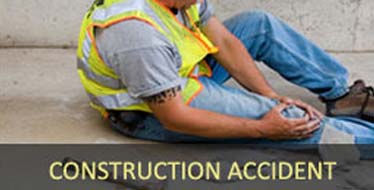Three Common Causes of a Fall from a Ladder

NYC construction accident lawyers at F&A Injury Law Firm discuss three common reasons for a fall from a ladder. Compared to cutting tools such as a chainsaw, ladders look harmless enough. However, a fall from a 20 foot ladder on to your side or on to uneven ground can cause serious injury or death. Ladders account for the bulk of all fall injuries treated in U.S. Emergency rooms. The reason for this is their utility and straightforwardness of use. There are few projects or work situations that don’t require them, and their simplicity causes workers to take them for granted. Three common reasons for ladder accidents are described below:
Using the Wrong Ladder
Three ways that this happens are they’re either too short, are too light duty for the job, or are the wrong ladder type. Avoid short ladders by allowing more than enough height for safe and proper setup. This ensures that you won’t have to use the highest step, which is a common cause of falls. Allow an extra 7 to 10 feet for extension ladders and never climb beyond four rungs from the top. For a step-ladder, the climbing limit is two steps from the top.
The ladder must have sufficient structural strength to support your weight plus the weight of all tools and materials you will use. This is determined by its duty rating. The duty rating is the maximum weight that the ladder can safely hold. A ladder can lose its strength when it gets too old or damaged. When this happens, retire it.
Only use step-ladders in situations requiring a self-supporting ladder. Never lean a step-ladder against a wall when climbing it. Use an extension ladder instead.
Using the Ladder on Unstable Ground
Place the ladder on level and solid ground. Never place it on top of another object to gain additional height. In addition, place it away from doors and areas with lots of foot, forklift, and other types of traffic. Cordon off the area if necessary.
Incorrect Use of the Ladder
Correct use includes following the manufacturer’s guidelines, staying off the top rungs, and not overreaching either overhead or off to the side. Either use a longer ladder to extend your vertical reach, or reposition the ladder to avoid reaching off to the side. Always climb a ladder using three-point contact.
If you were injured in a fall from a ladder or scaffold because of a negligent employer, seek the legal advice of an experienced work accident lawyer. Contact us at Frekhtman & Associates.



